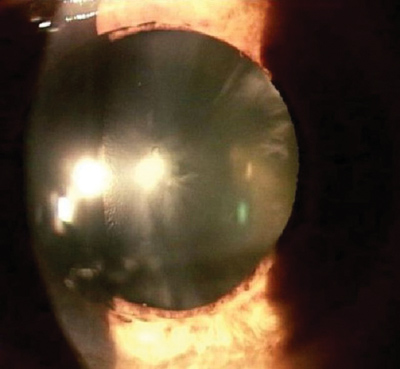Presbyopia may be the earliest observable symptom of age-related nuclear (ARN) cataract, according to a new study published in Ophthalmic Research.
|
Cataract may stem from the molecular changes that also cause presbyopia. |
We have found that there are massive changes taking place in the center of our lenses as we age, says Roger Truscott, Ph.D., an associate professor and senior research fellow at the Save Sight Institute. These may be responsible for presbyopia and ultimately for nuclear cataract. We really need to understand what is going on here. Once we do, it may be possible to interfere with these age-related changes.
The genesis of ARN cataract can be traced to the onset of a chemical barrier within the lens at middle age. This barrier restricts the ability of small molecules, such as antioxidants, to penetrate into the center of the lens, leaving the proteins in this region susceptible to oxidation and post-translational modification, the researchers report.
We postulate that the onset of the barrier and the hardening of the nucleus are intimately linked, the researchers say.
If this link can be established, there should be a renewed focus on understanding the molecular basis for presbyopia because inhibiting it may also prevent the later onset of cataract, according to the study.
We are currently investigating the molecular basis for the age-related increase in nuclear hardness, the researchers say.
McGinty SJ, Truscott RJ. Presbyopia: the first stage of nuclear cataract? Ophthalmic Res 2006 Jan 3;38(3):137-48 [Epub ahead of print].


